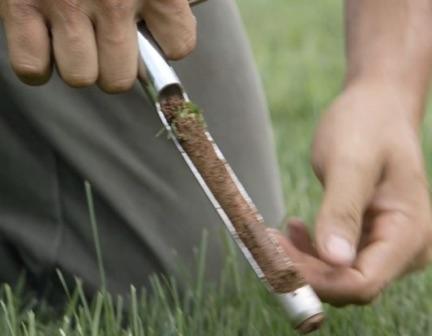
Soil testing has long been recommended by agronomists, consultants, and others, and for good reason. Anyone who doesn’t soil test is just guessing with regard to applying fertilizer. If too much is applied, money has been wasted; if too little is applied, forage growth will be less than optimal. Without a soil test, it is almost certain that too little or too much fertilizer will be applied.
With forage grasses, nitrogen (N) is the nutrient typically needed in the greatest amounts, and usually accounts for the largest portion of fertilizer expense. N is not tested in samples submitted to soil testing laboratories, so recommendations are based on results from research trials.
Ways to reduce N fertilizer costs include use of forage legumes, application of organic materials such as animal wastes, and animal rotation to improve distribution of dung and urine. It is prudent to compare costs per pound of nitrogen in various N fertilizers and from different suppliers. Consideration of the timing of N application as well as site characteristics are factors to consider as well. For example, an N application late in the growing season and/or on an upland, eroded field can be expected to produce less forage than an application made near the beginning of the growth season and/or on a rich bottom field.
Application of other nutrients have less immediate impact on forage growth, but are also quite important, especially phosphorus and potassium. The correct prioritization of soil amendments for pastures and hay fields varies on different farms and in different situations, but decisions made should always take soil test results into consideration.
Soil pH also deserves close scrutiny. Most soils in the Southeast tend to become too acid for good growth of most forage species. In general, it is recommended to keep the soil pH at 5.8 or above for most warm season forage crops and at 6.0 or higher for most cool season forage crops. The farther pH falls below these ranges, the less likely it becomes that optimum growth will occur. Soil pH range is a logarithmic scale, and therefore the impact of allowing pH levels to decline are much more dramatic than they might seem. For example, a soil pH of 5.0 is ten times more acidic than a pH of 6.0.
In many cases, applying lime to raise soil pH should be a top priority. This is especially true if the soil pH is 5.5 or less. Having an appropriate soil pH makes many nutrients in the soil more available for uptake by forage crops, it favors the growth of forage plants, it decreases the competitive ability of many weeds, and it increases the effectiveness of some herbicides. It also adds calcium and (in the case of dolomitic lime) magnesium to the soil.
The biggest error associated with soil testing is the sampling process. Generally, soil subsamples should be taken from 20 or more places within a sampling area of no more than about 10 acres. Taking subsamples to the same depth is critical. In perennial pastures, a 3-inch depth is typically recommended. In areas that are regularly tilled, subsamples should be taken to plow depth. Subsamples should be thoroughly mixed and a single sample (usually about a pint) submitted for analysis.
Given the alarming recent increases in fertilizer costs, soil testing is more valuable than ever. Soil testing isn’t a glamorous activity, but it can provide a huge payback in terms of forage crop productivity and animal production.
__________________
Foraging Ahead is a column presented by Ragan & Massey and written by Dr. Don Ball, Professor Emeritus at Auburn University. Dr. Ball is one of the authors of the popular book “Southern Forages,” which can be found via a computer search that uses the words, “Southern Forages, The Fertilizer Institute.”
